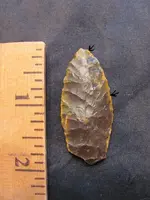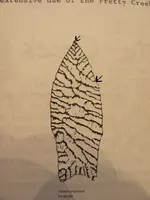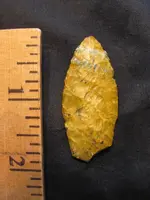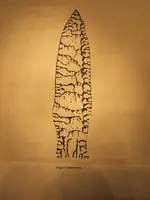old digger
Gold Member
Here is an example of charatistic flaking in identifing a point that has lost part of it's base. This is a Lovell Constricted point that I have. I was fortunate to meet, and show it to Wilfred Husted. He oversaw the digs in the Big Horn Canyon before it was flooded, and was doing the digs for the Smithsonion.
He conferred that with colateral flaking and the flaking on the one side along the upper cutting edge (between arrows) makes it a high probablity that it is a Lovell Constricted.
The point material appears to be quality KRF. The orange colored side was exposed for some time to give it that hue.
He conferred that with colateral flaking and the flaking on the one side along the upper cutting edge (between arrows) makes it a high probablity that it is a Lovell Constricted.
The point material appears to be quality KRF. The orange colored side was exposed for some time to give it that hue.
Amazon Forum Fav 👍
Attachments
Last edited:
Upvote
0








